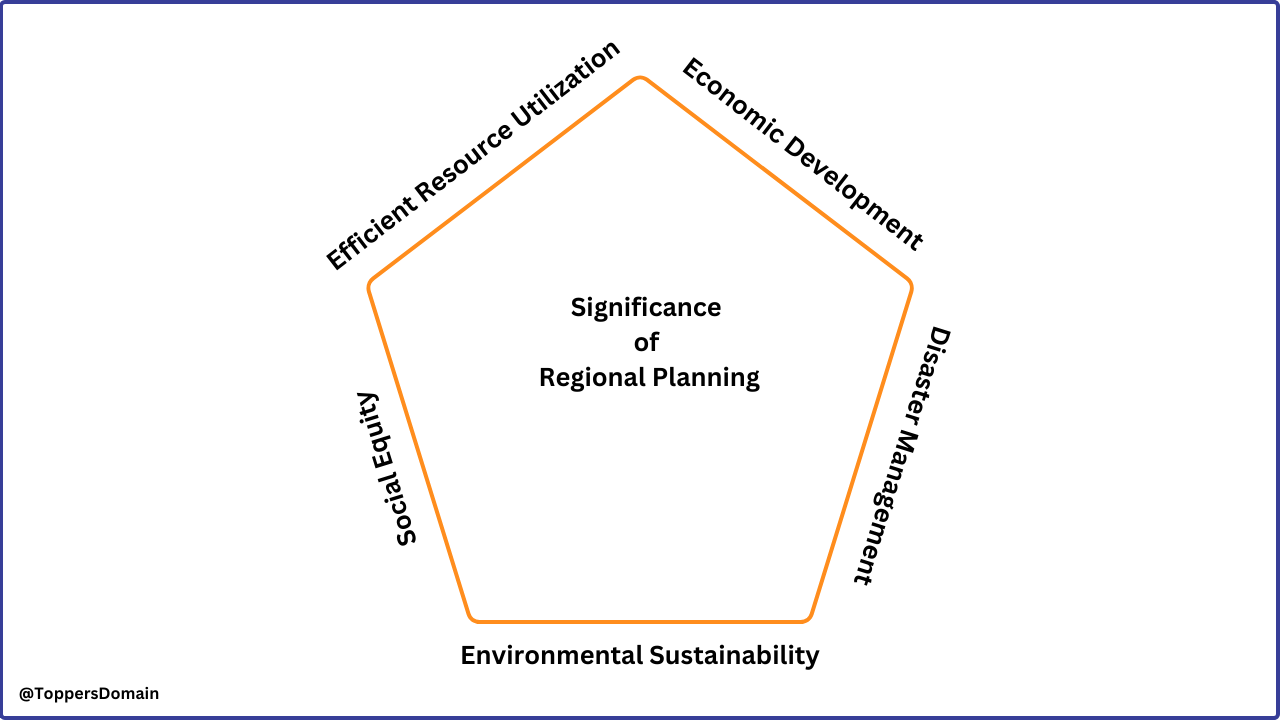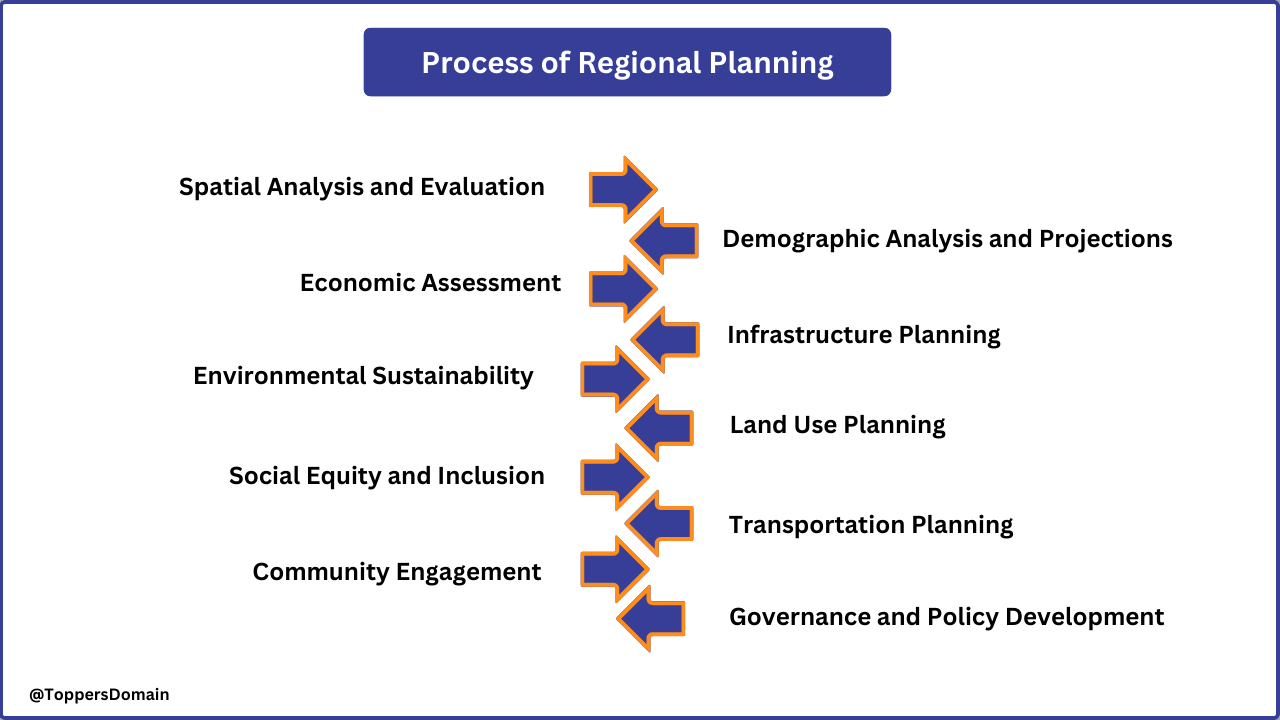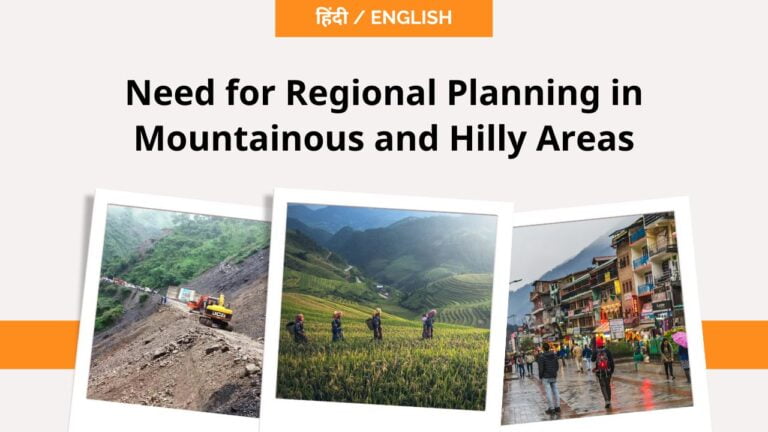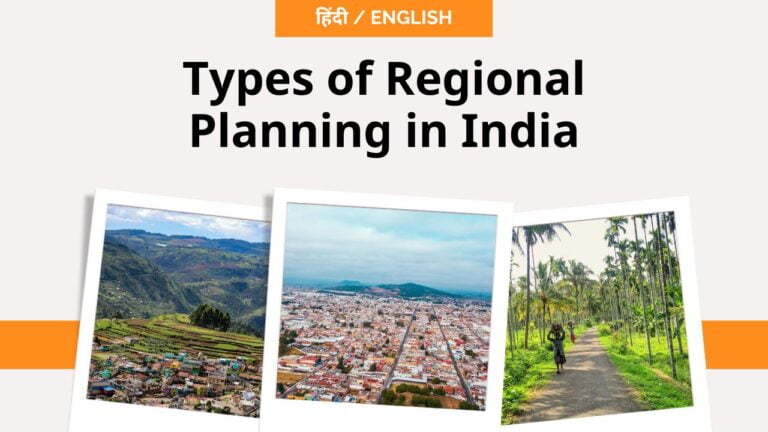Definition, Significance and Process of Regional Planning
Regional Planning & Development
Index
Introduction
Regional planning is a process of strategic development and management of regional resources and basic infrastructure to achieve economic, social and environmental objectives. It is a comprehensive approach of planning that considers the interrelationships between various aspects of an area – such as the natural environment, land use and natural resources; and develops plans for their development.
Definition
Regional planning is a proactive management process aimed at identifying opportunities and challenges in an area and making strategic decisions to enhance the quality of life of residents in that area. The aim is to ensure a sustainable future for an area.
The Significance of Regional Planning
Regional Planning plays a critical role in promoting sustainable development and addressing the challenges of urbanization, environmental degradation and social inequality. The following are the Significance of Regional Planning:
Efficient Resource Utilization
Regional Planning promotes efficient use of resources by identifying opportunities for conservation, recycling and regeneration. It ensures that the natural resources are used sustainably and the development is aligned with the carrying capacity of the region.
Economic Development
The regional planner identifies economic opportunities and helps create an environment conducive to the growth of businesses and job creation. It helps promote economic activity and supports land use policies conducive to it, in order to encourage sustainable economic development. Also ensures development of infrastructure and transport network.
Social Equity
The objective of regional planning is to create a balanced and inclusive society where everyone has access to basic amenities, essential services and opportunities. Regional planning ensures that marginal and vulnerable populations are included in housing policies as well as the transport networks are designed to meet the needs of all residents.
Environmental Sustainability and Sustainable Development
Regional planning works to conserve the natural habitats of diverse species and promote environmental sustainability through biodiversity conservation. Regional planning ensures that developmental activities do not compromise the environmental sustainability of the region. Regional planning also ensures that the natural resources of the region are protected and preserved for future generations.
Disaster Management
Regional planning works by identifying the vulnerabilities of a region and develops strategies to reduce the vulnerability to disasters. Thus, regional planning plays an important role in disaster management. Regional planning ensures that the basic infrastructure of the region is adapted to natural disasters. Regional planning also ensures that the necessary emergency response systems are in place to deal with any emergency.
The Process of Regional Planning
Regional planning is a complex and continuous process involving various phases. The following are the specific steps of regional planning:
Spatial Analysis and Evaluation
Spatial analysis and evaluation involve assessing a region's physical characteristics, including land use, infrastructure and natural resources. By analysing these aspects, planners can identify opportunities and constraints, enabling them to make informed decisions regarding future development.
Demographic Analysis and Projections
Understanding the demographic makeup and trends within a region is vital for effective planning. By studying population growth, migration patterns and age distributions, planners can anticipate future demands for housing, transportation, healthcare and educational facilities.
Economic Assessment
Economic assessment evaluates a region's economic activities, identifying industries, sectors and employment opportunities. This analysis assists in recognizing areas for growth, attracting investments and fostering economic diversity, leading to enhanced regional development.
Infrastructure Planning
Infrastructure planning entails identifying and prioritizing the development of transportation networks, utilities, communication systems and public amenities. By ensuring adequate infrastructure, planners facilitate the smooth functioning of communities, fostering economic connectivity and social cohesion.
Land Use Planning
Land use planning involves allocating land for different purposes, such as residential, commercial, industrial and recreational zones. By considering environmental factors, accessibility and community needs, planners optimize land use, promoting sustainable development and minimizing conflicts.
Environmental Sustainability
Regional planning endeavours to strike a balance between development and environmental conservation. By incorporating sustainable practices, such as preserving green spaces, managing waste and promoting renewable energy sources, planners create healthier and resilient regions.
Transportation Planning
Efficient transportation networks are crucial for regional connectivity and mobility. Planners focus on developing comprehensive transportation systems that integrate roads, railways, airports and public transit, reducing congestion and improving accessibility.
Social Equity and Inclusion
Regional planning aims to ensure social equity and inclusion by addressing disparities and promoting equal access to resources and opportunities. This emphasizes the need for affordable housing, healthcare facilities, educational institutions and recreational spaces for all members of the community.
Governance and Policy Development
Effective governance and policy development play a vital role in regional planning. Collaboration between governments, stakeholders and communities is essential for formulating policies that align with regional objectives, ensuring transparent decision-making processes.
Community Engagement
Community engagement involves actively involving local residents and stakeholders in the planning process. By soliciting their input, planners gain valuable insights and foster a sense of ownership, resulting in more responsive and inclusive regional plans.
Conclusion :
Finally, regional planning is a comprehensive, forward-looking and proactive management process aimed at planning a sustainable future for regions. Regional planning promotes efficient resource use, economic development, social equity, environmental sustainability and disaster management by considering the interrelationships among various aspects of a region, such as the natural environment, land use and natural resources. Through spatial analysis, demographic assessment, economic assessment and infrastructure planning, regional planning ensures that development is well managed, balanced and tailored to the needs of the area. It becomes a collaborative effort, by involving the local community and establishing strong governance structures that reflect the aspirations and values of the people it serves.
Regional planning plays an important role in shaping the strategic development and management of regional resources and infrastructure. At the same time, it plays an important role in creating a thriving and sustainable development for the present and future generations.
Share
Other Topics
Unit - I





